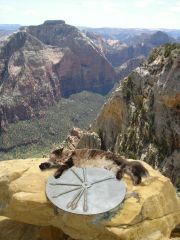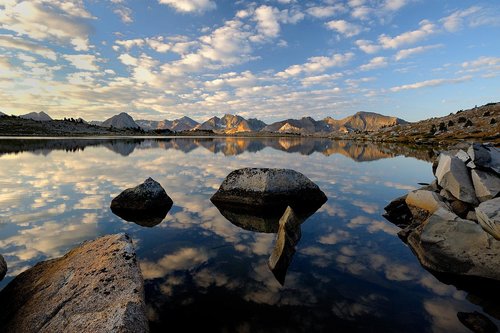
OK, this is a fake. It wasn't "shopped" -- I used a very simple bitmap editor that I obtained in 1996.
The interesting aspect, is the summary of reactions that I've received. 1) From mere outdoors people who've been up Lady Mt, or know of the climb: amusement, as they know that a house cat would be unlikely to make that climb. 2) From photoshop users: harsh criticism that I didn't use the obvious features of photoshop to make the cat look more real in that position.
For many people, photoshop manipulation is an obvious step in photo processing.








